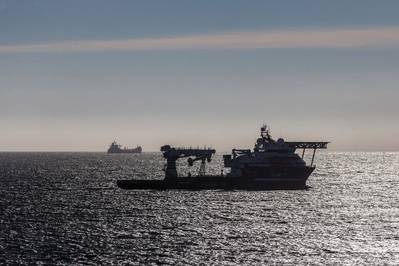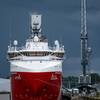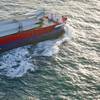Inside the “Hot Demand” for Subsea Construction Vessels
A rising tide lifts all boats, as the saying goes, and while the offshore industry is currently experiencing a wide-ranging surge, there are vessel types and specific market segments that are expected to benefit more than others.
One such segment is the offshore construction vessel (OCV) types, which to an increasing degree have found themselves in hot demand from both oil and gas developments as well as offshore wind activities.
While vessel definitions and abbreviations in this space can vary, for the purposes of this article, we will focus on what we at Fearnley Offshore Supply define as subsea construction vessels (CON), anchor handling construction vessels (AHCON), light construction vessels (LCV), and multi-purpose supply vessels (MPSV) above 68m length overall.
When we examine the fleet development within these asset classes specifically, we find both similarities and differences compared to the offshore support vessels (OSV) fleet overall.
Here as well, the market experienced an unprecedented fleet growth between 2008 and 2014, with shipyards churning out 18 newbuilds per year on average. The total OCV fleet thus tripled during those years. However, the subsequent stagnation since then was quite stark for OCVs, with only around five such assets delivered per year on average from 2015 onwards.
The current orderbook for these vessels is virtually non-existent and only consists of a handful of theoretically potential newbuilds that were all ordered during the last newbuild spree and still awaiting completion.
Another point worth noting is that given the relatively high barriers to entry compared to other OSV segments due to the complexity of operations, Fearnley Offshore Supply expects few, if any, future newbuilds to be ordered from new ventures outside of the industry.
Lead time for key maritime equipment, both high-end as well as core machinery, is also having an impact on the potential for OCV newbuilds. Recent yard quotes for such vessels schedule delivery up to 36 months from agreement, meaning that we are more than likely looking at 2026, at the earliest, before any new capacity will hit the market.
Surging OCV Demand from Multiple Directions
The market activity that drives OCV demand, on the other hand, is not only surging, but is actually pulled in multiple directions simultaneously. The sheer number of subsea projects set for development in the years to come, with its associated subsea trees, manifolds, risers, flowlines and umbilicals, and other infrastructure, has seen vessel demand already this year exceed 2014 levels.
In fact, subsea technology has now matured to a point where it is sometimes seen as a preferred technology, even in shallow water regions. This is especially true for the host of developments that will tie into and benefit from existing infrastructure. A good example of this effect can be observed in the number of subsea components expected to be installed in the Persian Gulf, a region that has seen very limited subsea developments historically on account of its benign waters.
Moreover, this effect can be measured in that subsea infrastructure has recently seen and is expected to continue to see its market share increase compared to conventional offshore O&G infrastructure.
Additionally, we expect the growth in offshore E&P investment to predominantly take place in deep- and ultra-deepwater regions, thus adding tremendous vessel demand going forward. Specifically, for OCVs Fearnley Offshore Supply forecasts demand levels to remain high throughout this decade, around or above 2014 levels for 8 of 10 years.
In addition to the O&G-derived vessel demand, significant OCV demand has come from offshore renewables, a trend that is expected to continue in the future.
While the vast majority of this demand comes from offshore wind, some projects, such as tidal turbines have also required high-capacity assets from the OCV fleet. A substantially tighter supply of relevant and suitable assets is already apparent, and considering the forecasted activity in the offshore wind segments going forward, the market for OCVs is set to not only surpass the previous market boom but even eclipse it.
A Show of Confidence
Over the past 12 months, we have seen a real sentiment change in the market, and shipowners in the OCV segment are now showing a confidence we have not seen for nearly a decade.
With a severely limited number of available vessels at any time, owners are demanding far better terms such as higher dayrates or longer firm periods, and some are even refraining from bidding on less lucrative vessel opportunities if terms are not satisfying.
For short-term or seasonal contracts in connection to specific project developments and campaigns, dayrates are already well into six figures, and multi-year firm contracts have also re-emerged in the market.
Better market terms, in combination with high replacement costs, has seen secondhand prices for OCVs increase significantly. This year we have recorded several units well into their teens having been sold at more than or close to newbuild cost.
Moreover, with rising geopolitical tensions and increasing importance of subsea infrastructure such as fiber optic cables, a number of high-end units have been picked up by non-offshore and governmental buyers at significant premiums.
The scene is now set for subsea vessel owners, especially those with assets not tied up on long-term contracts with yesterday’s rates.
We see the bargaining power already returning, leading to solid cash flows and likely reversal of impairments from the prolonged downturn.
In a somewhat normal market, we could argue that the current market conditions would trigger supply additions. However, the current balance sheets of most traditional players prohibit any action as of today. As such we expect the market to not only further improve but also remain in the owners’ favor for years to come.












